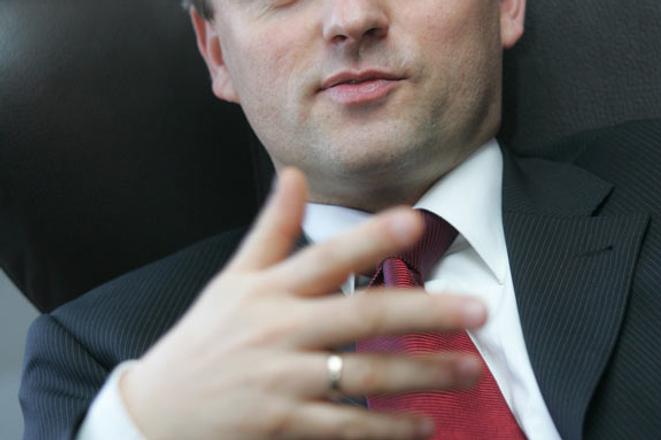Slovakia’s first five-star hotel – if one doesn’t count the Arcade boutique hotel in Bratislava – will be the Grandhotel Kempinski in Štrbské Pleso in the High Tatras mountain resort. Kempinski Slovakia director Konstantin Zeuke talked about his company’s prospects at a time when the hotel business seems to be entering a downturn.
Kempinski is opening two hotels in Slovakia at a time when room occupancy rates are falling, especially in the capital. Bad timing, or do you think you will prove the exception?
Kempinski is opening the first five-star branded hotels in Slovakia. The services and quality we will offer can not be compared with any existing hotel in Slovakia at this point in time.
Customers are looking for hotels and restaurants in Slovakia with high quality and excellent service, and they are willing to pay more for it. At the moment they travel to Austria because of the better quality and service they receive there in comparison with Slovakia, and the prices are not much higher than in Slovakia.
But falling occupancy rates show that something is wrong with tourism, don’t they? What can be done to turn the situation around?
Room prices are actually quite stable in Bratislava, although at the moment, you’re right, occupancy is dropping a bit. One reason for it could be that companies have started to rent serviced apartments for their employees. Possibly it is also because the city does not offer enough high-quality meeting and convention centers for big events.
During the week, hotels in the four-star segment are doing very well, and it is difficult to find a room on the weekdays in Bratislava. The challenge for the city is the weekends and leisure tourists. Bratislava offers good leisure and tourist facilities, but it competes with Vienna, Prague and Budapest, where tourists stay overnight and just travel for a day to Bratislava. This has to be reversed with attractive events, recreational facilities, sport and music events, and luxury hotels offering excellent services.
Yours is one of many new hotel projects coming to market. Is Bratislava destined to become like Prague, where competition has reduced room rates to an average of 60 euros a night?
Bratislava and Prague are two different cities. Bratislava is more a business traveler destination, while Prague is more a leisure tourist city. There is no way rates in Bratislava will drop to 60 euros, and in the five-star segment in Prague, prices are still very good.
With the Kempinski River Park in Bratislava, we will get business travelers back to Bratislava. They will no longer have to travel back and forth between Vienna and Bratislava during the week merely because they can only find five-star quality in Vienna. As of the summer of next year, they will find five-star luxury service and quality with us in Bratislava.
How important is promoting congress tourism to the future of the Bratislava hotel market?
It is very important, and we are concentrating on it as well with the Kempinski River Park and the Grand Hotel Kempinski High Tatras. We will offer five meeting rooms with a capacity of 10-40 people, two ballrooms with a capacity of 150-300 people, as well as a conference foyer with a capacity of 600 people in Bratislava, and in two conference rooms in the High Tatras for up to 100 people.
Bratislava needs to promote the city as a great meeting and event place, in cooperation with all hotels together. A new Convention Center for up to 5,000 people or more should be built with new equipment and conference facilities.
What is the future of tourism in the High Tatras, and how does Kempinski fit in with that future?
The High Tatras is a unique mountain region in Europe, very well known by Germans, Russians, and all other neighboring countries of Slovakia. Our hotel will be directly on the lake in Štrbské Pleso, overlooking the mountains and the valley. It is still a pioneer project, but I'm confident that Kempinski guests and others will start traveling for leisure or meetings to the High Tatras in the summer as well as in the winter.
Do you think tourism in the High Tatras will take a different course than tourism in Slovakia as a whole, and that the mountains can be marketed as a niche holiday that will appeal to travelers when the 'novelty' of Slovakia as a new EU member has worn off?
The High Tatras is a niche destination and it needs to be promoted more worldwide. It is a great destination offering very good recreational facilities for summer and winter as well as the beauty of nature with its mountains and lakes. Through the Kempinski chain we will start promoting the destination worldwide, and work very closely with the tourism board of Slovakia. We will bring a new customer mix to the High Tatras from the US, Russia, Germany, and neighboring countries.
(See also related articles:Where have all the tourists gone? and Hotels riding Eastern Slovak industrial boom).



 (source: SME - Peter Žakovič)
(source: SME - Peter Žakovič)